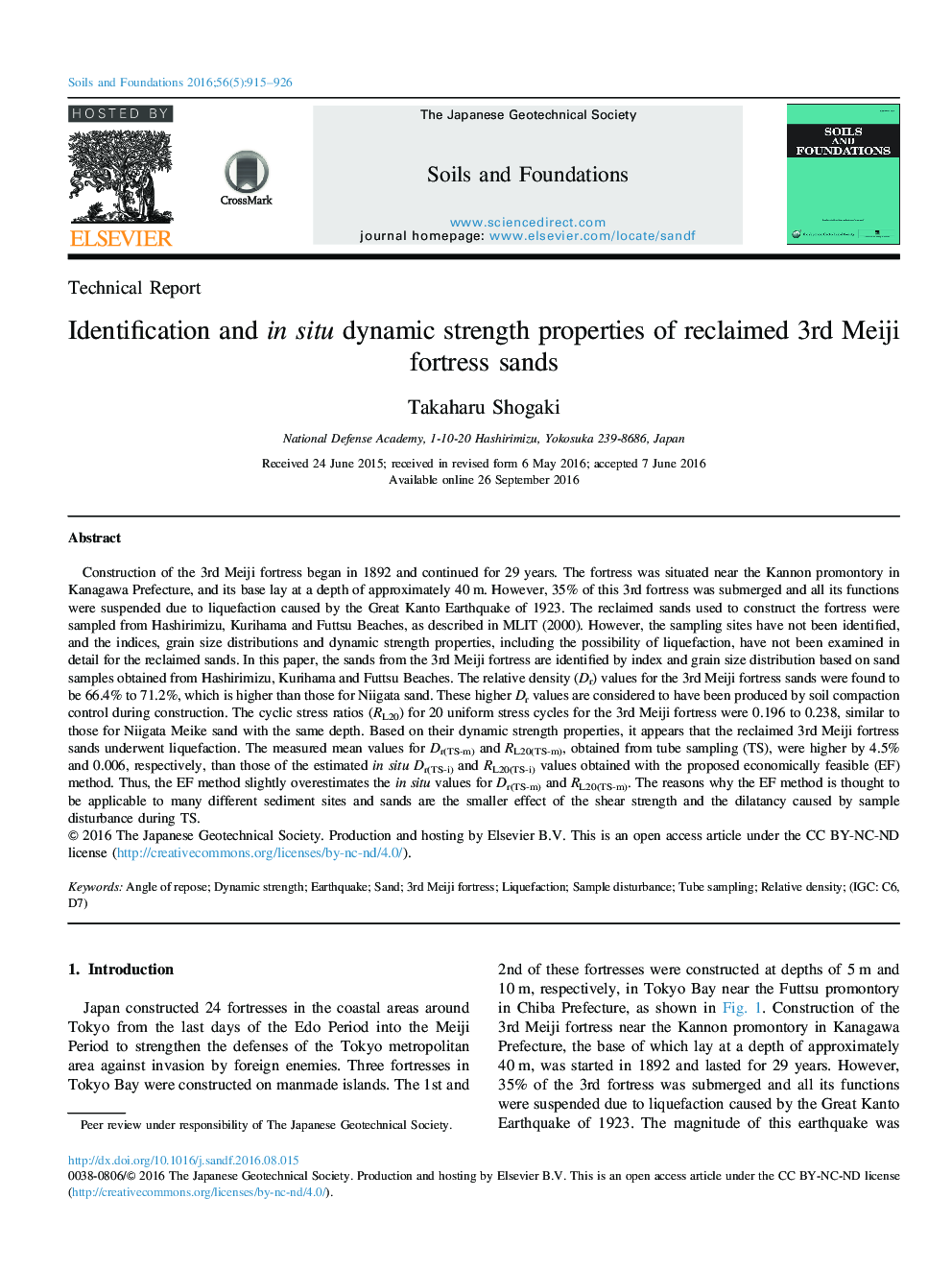| کد مقاله | کد نشریه | سال انتشار | مقاله انگلیسی | نسخه تمام متن |
|---|---|---|---|---|
| 4927677 | 1363219 | 2016 | 12 صفحه PDF | دانلود رایگان |

Construction of the 3rd Meiji fortress began in 1892 and continued for 29 years. The fortress was situated near the Kannon promontory in Kanagawa Prefecture, and its base lay at a depth of approximately 40Â m. However, 35% of this 3rd fortress was submerged and all its functions were suspended due to liquefaction caused by the Great Kanto Earthquake of 1923. The reclaimed sands used to construct the fortress were sampled from Hashirimizu, Kurihama and Futtsu Beaches, as described in MLIT (2000). However, the sampling sites have not been identified, and the indices, grain size distributions and dynamic strength properties, including the possibility of liquefaction, have not been examined in detail for the reclaimed sands. In this paper, the sands from the 3rd Meiji fortress are identified by index and grain size distribution based on sand samples obtained from Hashirimizu, Kurihama and Futtsu Beaches. The relative density (Dr) values for the 3rd Meiji fortress sands were found to be 66.4% to 71.2%, which is higher than those for Niigata sand. These higher Dr values are considered to have been produced by soil compaction control during construction. The cyclic stress ratios (RL20) for 20 uniform stress cycles for the 3rd Meiji fortress were 0.196 to 0.238, similar to those for Niigata Meike sand with the same depth. Based on their dynamic strength properties, it appears that the reclaimed 3rd Meiji fortress sands underwent liquefaction. The measured mean values for Dr(TS-m) and RL20(TS-m), obtained from tube sampling (TS), were higher by 4.5% and 0.006, respectively, than those of the estimated in situ Dr(TS-i) and RL20(TS-i) values obtained with the proposed economically feasible (EF) method. Thus, the EF method slightly overestimates the in situ values for Dr(TS-m) and RL20(TS-m). The reasons why the EF method is thought to be applicable to many different sediment sites and sands are the smaller effect of the shear strength and the dilatancy caused by sample disturbance during TS.
Journal: Soils and Foundations - Volume 56, Issue 5, October 2016, Pages 915-926